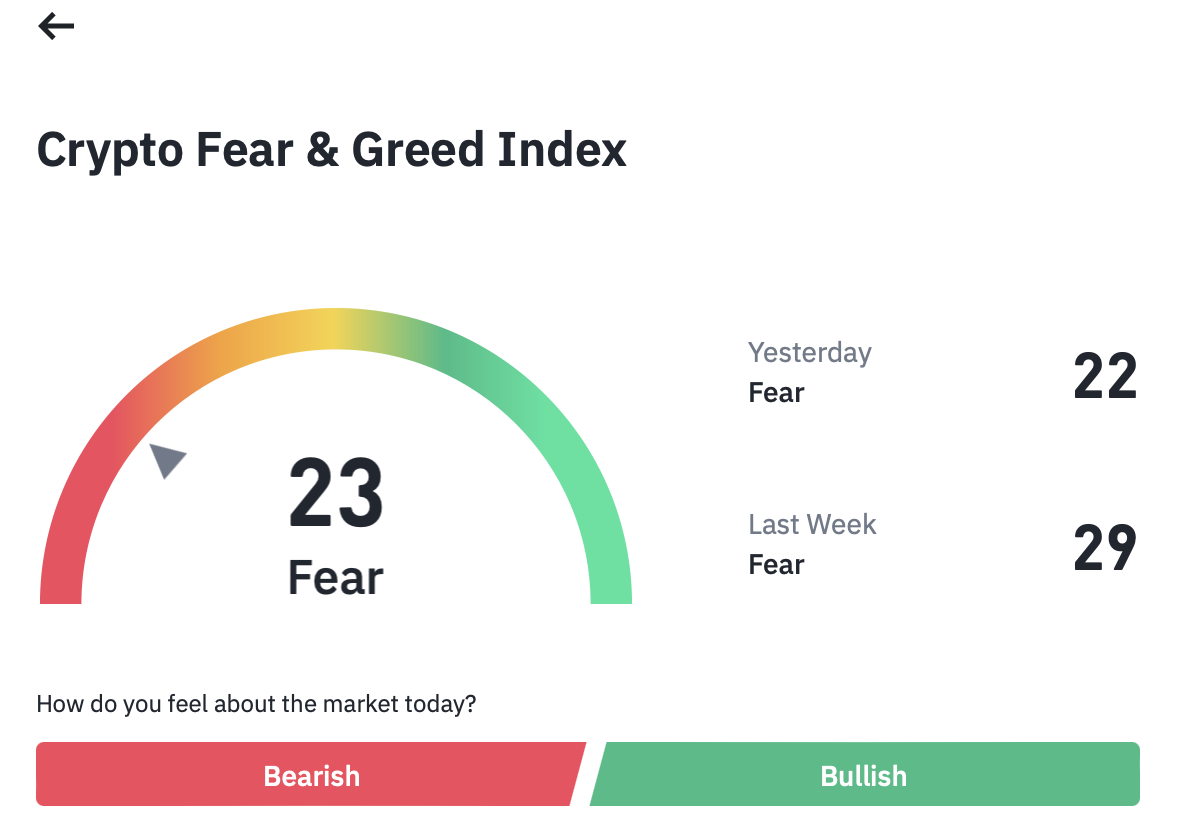Fear is Dominating the Market, Investor Sentiment Plummets
08.09.2024 10:00 1 min. read Alexander StefanovThe recent collapse of the crypto market has pushed investor sentiment into the "extreme fear" zone relative to Bitcoin's fear and greed index.
The index, which ranges from 1 to 100, has levels such as “extreme fear,” “fear,” “neutral,” “greed,” and “extreme greed” to gauge how investors feel about the market. The index is currently at level 23 and reflects the deep sense of fear among investors.

Interestingly, when the index reaches extreme levels, it often signals a potential price swing in the opposite direction. Historically, when the index enters the zone of extreme fear, it often marks a market bottom followed by a price recovery. For example, in August the index fell to 20 before the price of Bitcoin briefly recovered.
Despite this possible signal of a bottom, however, a recovery may not be imminent. Historically, September has been a bearish month for Bitcoin, with negative returns recorded.
Looking ahead, October typically brings more positive market action. If historical trends continue, the crypto market could recover after the end of September, providing some hope for investors facing the current downturn.
-
1
Strategy Plans $2.1B Stock Sale to Expand Bitcoin Holdings
22.05.2025 17:36 1 min. read -
2
Will Berkshire Hathaway Rethink Bitcoin Under New Leadership?
12.05.2025 16:00 2 min. read -
3
Bitcoin Could Top $200K in 2025, Says Investment Executive
17.05.2025 14:00 1 min. read -
4
Today Is Bitcoin Pizza Day – And BTC Just Hit $111K
22.05.2025 18:00 2 min. read -
5
After April Surge, Bitcoin ETFs Enter Cooling Phase With Modest Gains
13.05.2025 17:00 1 min. read
Truth Social Seeks to Launch Spot Bitcoin ETF via NYSE Arca
Trump Media & Technology Group (TMTG) is making a bold move into the crypto investment space by backing a new spot Bitcoin ETF.
Will Musk Double Down on Bitcoin as U.S. Debt Soars?
Crypto attorney John Deaton has sparked speculation that Elon Musk and Tesla could expand their Bitcoin holdings, citing rising fiscal risks in the United States as a potential motivator.
BlackRock Rotates Out of Bitcoin, Pours $69M Into Ethereums
BlackRock has executed a notable portfolio adjustment, reducing its exposure to Bitcoin while increasing its Ethereum holdings.
Crypto Enters a Make-or-Break Era, Says Industry Insider
Omni cofounder Austin King believes the cryptocurrency industry is on the verge of a major reinvention.
-
1
Strategy Plans $2.1B Stock Sale to Expand Bitcoin Holdings
22.05.2025 17:36 1 min. read -
2
Will Berkshire Hathaway Rethink Bitcoin Under New Leadership?
12.05.2025 16:00 2 min. read -
3
Bitcoin Could Top $200K in 2025, Says Investment Executive
17.05.2025 14:00 1 min. read -
4
Today Is Bitcoin Pizza Day – And BTC Just Hit $111K
22.05.2025 18:00 2 min. read -
5
After April Surge, Bitcoin ETFs Enter Cooling Phase With Modest Gains
13.05.2025 17:00 1 min. read


